A Techno-Economic Feasibility Analysis of Mono-Si and Poly-Si Photovoltaic Systems in the Rooftop Area of Commercial Building under the Feed-In Tariff Scheme
Abstract
1. Introduction
1.1. Research Background
1.2. Literature Review
1.3. Challenges and Objectives
2. Materials and Methods
2.1. Phase 1: Technical Analysis of the Rooftop PV System
2.1.1. Establishment of Impact Factors
- Location: Hong Kong is located in the subtropical area with an abundant solar radiation resource, of which the longitude and latitude are 114°15′ E and 22°15′ N. Peng and Lu [5] compared the solar radiation resource between Hong Kong and some PV leading countries and regions. It was shown that the annual solar radiation for mainland China, Germany, and the US were 1000–2200, 900–1200 and 1200–2400 kWh/m2, respectively, while that for Hong Kong was determined to be 1333 kWh/m2. Thus, it can be said that the solar radiation potentials in Hong Kong are sufficient enough to implement the PV system in buildings.
- Type of PV panel: The efficiency of the PV panel depends on the type of the PV panel, which could largely affect the power output of the PV system. The PV technology is generally classified into three generations (refer to Table 1): (i) the first generation mainly uses silicon wafers, including mono-Si and poly-Si; (ii) the second generation involves thin-film technologies, including amorphous silicon (a-Si), cadmium telluride (CdTe), and copper indium gallium selenide (CIGS); and (iii) the third generation covers organic, dye-sensitized solar panels, perovskite, etc. [8,41,42].
- Azimuth and slope of the installed PV panel: Al-Otaibi et al. [43] analyzed the azimuth and slope of the installed PV panel, indicating that the azimuth of the PV panel should face the south in the northern hemisphere, and it should be opposite in the southern hemisphere. In terms of the slope of the PV panel, it usually is equal to the latitude of the actual location of a PV project so that more solar radiation can reach the PV panel. Peng and Lu [5] found the optimal slope of the installed PV panel in Hong Kong, indicating that the optimal tilt angle would be 22 ± 1 degree close to the local latitude.
2.1.2. Development of a Reference Model
2.1.3. Installation Plan for PV System by Considering the Shading Effect
2.1.4. Estimation of the Amount of Solar Radiation and Electricity Generated from the PV System
2.2. Phase 2: Economic Feasibility of the Rooftop PV System
2.2.1. Costs of the Rooftop PV System
2.2.2. Benefits of the Rooftop PV System
2.2.3. Fluctuations of all the Costs and Benefits from the PV Systems in Hong Kong
3. Results and Discussion
3.1. Analysis of the Shading Effect
3.2. Estimation of the Amount of Solar Radiation and Electricity Generated from the PV System
3.3. Economic Feasibility of the Rooftop PV System
4. Conclusions
- Shading effect: Even if the percentage of shading was found to be high in the winter solstice, it was determined that the rooftop area of the Pao Yue-Kong Library would not be significantly affected by the shadows from the surrounding buildings in a year.
- Solar radiation potential: The solar radiation reached on the PV systems in the rooftop area of the Pao Yue-Kong Library was found to be fluctuated throughout a year, showing that the highest amount of the solar radiation in a year was estimated at 136.96 kWh/m2 in October, while the lowest value appeared to be 55.64 kWh/m2 in February.
- Electricity generation: It was found that the amount of electricity generated from two types of PV systems (i.e., mono-Si and poly-Si) would be proportional to the amount of solar radiation, showing the highest value in October and the lowest value in February. A total amount of electricity generated from the mono-Si PV system was estimated to be 167.87 kWh/m2, indicating 13.97% higher than that for the poly-Si PV system (i.e., 147.29 kWh/m2).
- Economic feasibility: The NPV (in 2044) for the poly-Si PV system was determined to be a little bit higher (i.e., 4188 USD/kW) than that for the mono-Si PV system (i.e., 4348 USD/kW). The SIRs (in 2044) for the mono-Si and poly-Si PV systems were found to be 2.07 and 2.15, respectively, indicating over double benefits from the initial investment costs. In addition, the payback periods for the mono-Si and poly-Si PV systems were estimated at 8.67 years and 8.31 years, respectively, indicating that all the PV systems could gain profits for more than 16 years out of 25 years (the life span of the PV systems).
Supplementary Materials
Author Contributions
Funding
Institutional Review Board Statement
Informed Consent Statement
Data Availability Statement
Conflicts of Interest
Nomenclature
| Abbreviations | |
| a-Si | amorphous silicon |
| BIPV | building-integrated photovoltaic |
| CdTe | cadmium telluride |
| CIGS | copper indium gallium selenide |
| CLP | china light and power company |
| LCCA | life cycle cost analysis |
| mono-Si | monocrystalline |
| NPV | net present value |
| O&M | operation and maintenance |
| poly-Si | polycrystalline |
| PV system | photovoltaic system |
| PF | performance ratio |
| SIR | saving-to-investment ratio |
| Symbols | |
| t | escalation rate of carbon emission trading price |
| e | escalation rate of electricity price |
| Ei | benefit from electricity price |
| f | carbon emission factor |
| g | escalation rate of government subsidy |
| m | escalation rate of O&M cost |
| n | lifespan of the PV system |
| r | real interest rate |
| Fi | benefit from feed-in tariff price |
| Gi | benefit from government subsidy price |
| EG | electricity generation |
| R | performance degradation rate of the PV systems |
| Ii | initial investment cost |
| Mi | operation and maintenance (O&M) cost |
| PE | electricity price |
| PF | feed-in tariff price |
| PG | government subsidy price |
| PT | carbon emission trading price |
| Ti | benefit from carbon emission trading price |
References
- United Nations Climate Change Paris Agreement. Available online: https://unfccc.int/files/meetings/paris_nov_2015/application/pdf/paris_agreement_english_.pdf (accessed on 20 April 2018).
- Rosenbloom, D.; Meadowcroft, J. The journey towards decarbonization: Exploring socio-technical transitions in the electricity sector in the province of Ontario (1885–2013) and potential low-carbon pathways. Energy Policy 2014, 65, 670–679. [Google Scholar] [CrossRef]
- Turner, J.A. A Realizable Renewable Energy Future. Science 1999, 285, 687–689. [Google Scholar] [CrossRef] [PubMed]
- Zhu, L.; Fan, Y. A real options-based CCS investment evaluation model: Case study of China’s power generation sector. Appl. Energy 2011, 88, 4320–4333. [Google Scholar] [CrossRef]
- Peng, J.; Lu, L. Investigation on the development potential of rooftop PV system in Hong Kong and its environmental benefits. Renew. Sustain. Energy Rev. 2013, 27, 149–162. [Google Scholar] [CrossRef]
- HKEMSD Hong Kong Energy End-Use Data 2015. Available online: http://www.emsd.gov.hk/emsd/e_download/pee/HKEEUD2015.pdf (accessed on 28 May 2020).
- Camp Dresser & McKee International Inc. Study on the Potential Applications of Renewable Energy in Hong Kong-Stage 1 Study Report; EMSD: Hong Kong, China, 2002. Available online: https://re.emsd.gov.hk/english/gen/overview/files/stage1_report.pdf (accessed on 5 May 2020).
- Yang, H.; Wang, M.; Peng, J. Actual Performances of PV Panels in the Local Environment; EMSD: Hong Kong, China, 2020. Available online: https://re.emsd.gov.hk/files/Actual_Performances_of_PV_Panels_in_the_Local_Environment.pdf (accessed on 5 May 2020).
- Meinhardt (M&E) Ltd. Study Report of Photovoltaic (PV) Applications and PV Potential on Building Rooftops in Hong Kong; EMSD: Hong Kong, China, 2019. Available online: https://re.emsd.gov.hk/english/files/2019_Executive_Summary_for_PV_Study_EN.pdf (accessed on 5 May 2020).
- HKSAR Government Hong Kong’s Climate Action Plan 2030+. Available online: https://gia.info.gov.hk/general/201701/20/P2017012000736_251945_1_1484911087018.pdf (accessed on 28 May 2020).
- HK RE Net Feed-in Tariff (FiT) Introduction. Available online: https://re.emsd.gov.hk/english/fit/int/fit_int.html (accessed on 28 May 2020).
- HKSAR Government Press. Release-Renewable Energy Facilitation Measure Takes Effect. Available online: https://www.info.gov.hk/gia/general/202003/01/P2020022800340.htm?fontSize=1 (accessed on 28 May 2020).
- Koo, C.; Hong, T.; Park, J. Development of the life-cycle economic and environmental assessment model for establishing the optimal implementation strategy of the rooftop photovoltaic system. Technol. Econ. Dev. Econ. 2015, 24, 27–47. [Google Scholar] [CrossRef]
- Agrawal, M.; Saxena, B.K.; Rao, K.V.S. Estimation of Energy Production and Net Metering of Grid Connected Rooftop Photovoltaic System in Rajasthan. In Proceedings of the 2017 International Conference on Circuit, Power and Computing Technologies (ICCPCT), Kollam, India, 20–21 April 2017. [Google Scholar] [CrossRef]
- Rus-Casas, C.; Aguilar, J.D.; Rodrigo, P.; Almonacid, F.; Pérez-Higueras, P.J. Classification of methods for annual energy harvesting calculations of photovoltaic generators. Energy Convers. Manag. 2015, 78, 527–536. [Google Scholar] [CrossRef]
- Green, M.A. Solar Cells: Operating Principles, Technology, and System Applications; Prentice Hall: Hoboken, NJ, USA, 1982. [Google Scholar]
- Streetman, B.G.; Banerjee, S. Solid State Electronic Devices; Prentice Hall: Hoboken, NJ, USA, 2001. [Google Scholar]
- Almonacid, F.; Rus, C.; Pérez-Higueras, P.; Hontoria, L. Calculation of the energy provided by a PV generator. Comparative study: Conventional methods vs. artificial neural networks. Energy 2011, 36, 375–384. [Google Scholar] [CrossRef]
- IEC 60891. Procedures for Temperature and Irradiance Corrections to Measured I–V Characteristics of Crystalline Silicon Photovoltaic (PV) Devices, 2nd ed.; International Electrotechnical Commission: Geneva, Switzerland, 2009. [Google Scholar]
- Anderson, A.J. PV translation equations. A new approach. In NREL Photovoltaics Program Review Meeting; NREL: Golden, CO, USA, 1996. [Google Scholar]
- Blaesser, G.; Rossi, E. Extrapolation of outdoor measurements of PV arrays I–V characteristics to Standard Tests Conditions. Sol Cells 1988, 25, 91–96. [Google Scholar] [CrossRef]
- Marion, B. A method for modelling the current–voltage curve on a PV module for outdoor conditions. Progr. Photovolt. Res. Appl. 2002, 10, 205–214. [Google Scholar] [CrossRef]
- Araujo, G.; Sánchez, E. Analytical expressions for the determination of the maximum power point and the fill factor of a solar cell. Sol. Cells 1982, 5, 377–386. [Google Scholar] [CrossRef]
- IEC 61724. Photovoltaic System Performance Monitoring—Guidelines for Measurement, Data Exchange and Analysis; International Electrotechnical Commission: Geneva, Switzerland, 1993. [Google Scholar]
- Mondol, J.D.; Yohanis, Y.G.; Smyth, M.; Norton, B. Performance analysis of a grid-connected building integrated photovoltaic system. In ISES Solar World Congress; International Solar Energy Society: Goteborg, Sweden, 2003. [Google Scholar]
- Meyer, E.L.; van Dyk, E.E. Development of energy model based on total daily irradiation and maximum ambient temperature. Renew. Energy 2000, 21, 37–47. [Google Scholar] [CrossRef]
- Gianolli-Rossi, E.; Krebs, K. Energy rating of PV modules by outdoor response analysis. In E. C. PV Solar Energy Conference. 8; Kluwer Academic Publishers: Dordrecht, The Netherlands; Boston, MA, USA; London, UK, 1988. [Google Scholar]
- IEC 61853-1. Photovoltaic (PV) Module Performance Testing and Energy Rating—Part 1: Irradiance and Temperature Performance Measurements and Power Ratings; International Electrotechnical Commission: Geneva, Switzerland, 2011. [Google Scholar]
- Paghasian, K.; TamizhMani, G. Photovoltaic module power rating per IEC 61853-1 Standard—A study under natural sunlight. In Proceedings of the 2011 37th IEEE Photovoltaic Specialists Conference, Seattle, WA, USA, 19–24 June 2011. [Google Scholar] [CrossRef]
- Song, A.; Lu, L.; Liu, Z.; Wong, M.S. A study of incentive policies for building-integrated photovoltaic technology in Hong Kong. Sustainability 2016, 8, 769. [Google Scholar] [CrossRef]
- Kaizuka, I. Net billing schemes, Experience from Japanese Evolution to Net-export FIT. In Proceedings of the PVPS Workshop, Frankfurt, Germany, 24 September 2012. [Google Scholar]
- Yamada, H. National Survey Report of PV Power Applications in Japan 2012. In IEA Cooperative Programme on PVPS Task 1 Exchanging and Dissemination of Information on PV Power Systems; IEA: Tokyo, Japan, 2013; pp. 9–12. Available online: https://iea-pvps.org/wp-content/uploads/2020/01/nsr_2012_jap_2_01.pdf (accessed on 5 April 2020).
- Zhang, S.; He, Y. Analysis on the development and policy of solar PV power in China. Renew. Sustain. Energy Rev. 2013, 21, 393–401. [Google Scholar] [CrossRef]
- Huang, P.; Negro, S.O.; Hekkert, M.P.; Bi, K. How China became a leader in solar PV: An innovation system analysis. Renew. Sustain. Energy Rev. 2016, 64, 777–789. [Google Scholar] [CrossRef]
- Bakos, G.C.; Soursos, M.; Tsagas, N.F. Technoeconomic assessment of a building-integrated PV system for electrical energy saving in residential sector. Energy Build. 2003, 35, 757–762. [Google Scholar] [CrossRef]
- Li, D.H.W.; Cheung, K.L.; Lam, T.N.T.; Chan, W.W.H. A study of grid-connected photovoltaic (PV) system in Hong Kong. Appl. Energy 2012, 90, 122–127. [Google Scholar] [CrossRef]
- Lang, T.; Ammann, D.; Girod, B. Profitability in absence of subsidies: A techno-economic analysis of rooftop photovoltaic self-consumption in residential and commercial buildings. Renew. Energy 2016, 87, 77–87. [Google Scholar] [CrossRef]
- Beuse, M.; Dirksmeier, M.; Steffen, B.; Schmidt, T.S. Profitability of commercial and industrial photovoltaics and battery projects in South-East-Asia. Appl. Energy 2020, 271, 115218. [Google Scholar] [CrossRef]
- Xin-gang, Z.; Yi-min, X. The economic performance of industrial and commercial rooftop photovoltaic in China. Energy 2019, 187, 115961. [Google Scholar] [CrossRef]
- Lou, S.; Li, D.H.W.; Chan, W.W.; Lam, J.C. Life-cycle analysis of photovoltaic systems in Hong Kong. J. Renew. Sustain. Energy 2017, 9, 045901. [Google Scholar] [CrossRef]
- Tripathy, M.; Sadhu, P.K.; Panda, S.K. A critical review on building integrated photovoltaic products and their applications. Renew. Sustain. Energy Rev. 2016, 61, 451–465. [Google Scholar] [CrossRef]
- Parida, B.; Iniyan, S.; Goic, R. A review of solar photovoltaic technologies. Renew. Sustain. Energy Rev. 2011, 15, 1625–1636. [Google Scholar] [CrossRef]
- Al-Otaibi, A.; Al-Qattan, A.; Fairouz, F.; Al-Mulla, A. Performance evaluation of photovoltaic systems on Kuwaiti schools’ rooftop. Energy Convers. Manag. 2015, 95, 110–119. [Google Scholar] [CrossRef]
- Zomer, C.D.; Costa, M.R.; Nobre, A.; Rüther, R. Performance compromises of building-integrated and building-applied photovoltaics (BIPV and BAPV) in Brazilian airports. Energy Build. 2013, 66, 607–615. [Google Scholar] [CrossRef]
- Rand, B.P.; Genoe, J.; Heremans, P.; Poortmans, J. Solar Cells Utilizing Small Molecular Weight Organic Semiconductors. Prog. Photovolt. Res. Appl. 2007, 15, 659–676. [Google Scholar] [CrossRef]
- CLP Solar Energy Information. Available online: https://www.clp.com.hk/en/my-home/energy-saving-service/solar-energy-information (accessed on 30 April 2020).
- Lin, B.; Li, J. Analyzing cost of grid-connection of renewable energy development in China. Renew. Sustain. Energy Rev. 2015, 50, 1373–1382. [Google Scholar] [CrossRef]
- HSBC Currency Exchange Rates. Available online: https://www.hsbc.com.hk/zh-cn/investments/market-information/hk/currency-exchange-rate/ (accessed on 30 April 2020).
- CLP Renewable Energy Feed-in Tariff (Business Customers). Available online: https://www.clp.com.hk/en/community-and-environment/renewable-schemes/feed-in-tariff/feed-in-tariff-business-customers (accessed on 30 April 2020).
- CLP Scheme of Control Statement and Ten-year Summaries. Available online: https://www.clpgroup.com/tc/Investors-Information-site/PDFListFinancialHighlights/cSOC10yearsSummarychinese.pdf (accessed on 30 April 2020).
- Hong Kong Emission Exchange Price and Volume of Guangdong Emission Allowances. Available online: http://www.hex.com.hk/data_detail.asp?id=1057# (accessed on 5 May 2020).
- China Emissions Exchange (CEEX) Market Quotes. Available online: http://www.cnemission.com/article/hqxx/ (accessed on 30 April 2020).
- CLP Sustainability Report 2019. Available online: https://sustainability.clpgroup.com/en/2019/ (accessed on 5 May 2020).
- Zhang, M.M.; Zhou, D.Q.; Zhou, P.; Liu, G.Q. Optimal feed-in tariff for solar photovoltaic power generation in China: A real options analysis. Energy Policy 2016, 97, 181–192. [Google Scholar] [CrossRef]
- Hong Kong Monetary Authority Economic & Financial Data for Hong Kong. Available online: https://www.hkma.gov.hk/eng/data-publications-and-research/data-and-statistics/economic-financial-data-for-hong-kong/ (accessed on 5 May 2020).
- Census and Statistics Department Annual Report on the Consumer Price Index (2019 Edition). Available online: https://www.censtatd.gov.hk/hkstat/sub/sp270.jsp?productCode=B1060002 (accessed on 5 May 2020).
- Hong Kong Observatory. Climate of Hong Kong. Available online: http://www.weather.gov.hk/en/sitemap.html?menu=2 (accessed on 10 April 2020).
- Zhang, X.; Shen, L.; Chan, S.Y. The diffusion of solar energy use in HK: What are the barriers? Energy Policy 2012, 41, 241–249. [Google Scholar] [CrossRef]
- Sagani, A.; Mihelis, J.; Dedoussis, V. Techno-economic analysis and life-cycle environmental impacts of small-scale building-integrated PV systems in Greece. Energy Build. 2017, 139, 277–290. [Google Scholar] [CrossRef]
- Wang, W.; Liu, Y.; Wu, X.; Xu, Y.; Yu, W.; Zhao, C.; Zhong, Y. Environmental assessments and economic performance of BAPV and BIPV systems in Shanghai. Energy Build. 2016, 130, 98–106. [Google Scholar] [CrossRef]
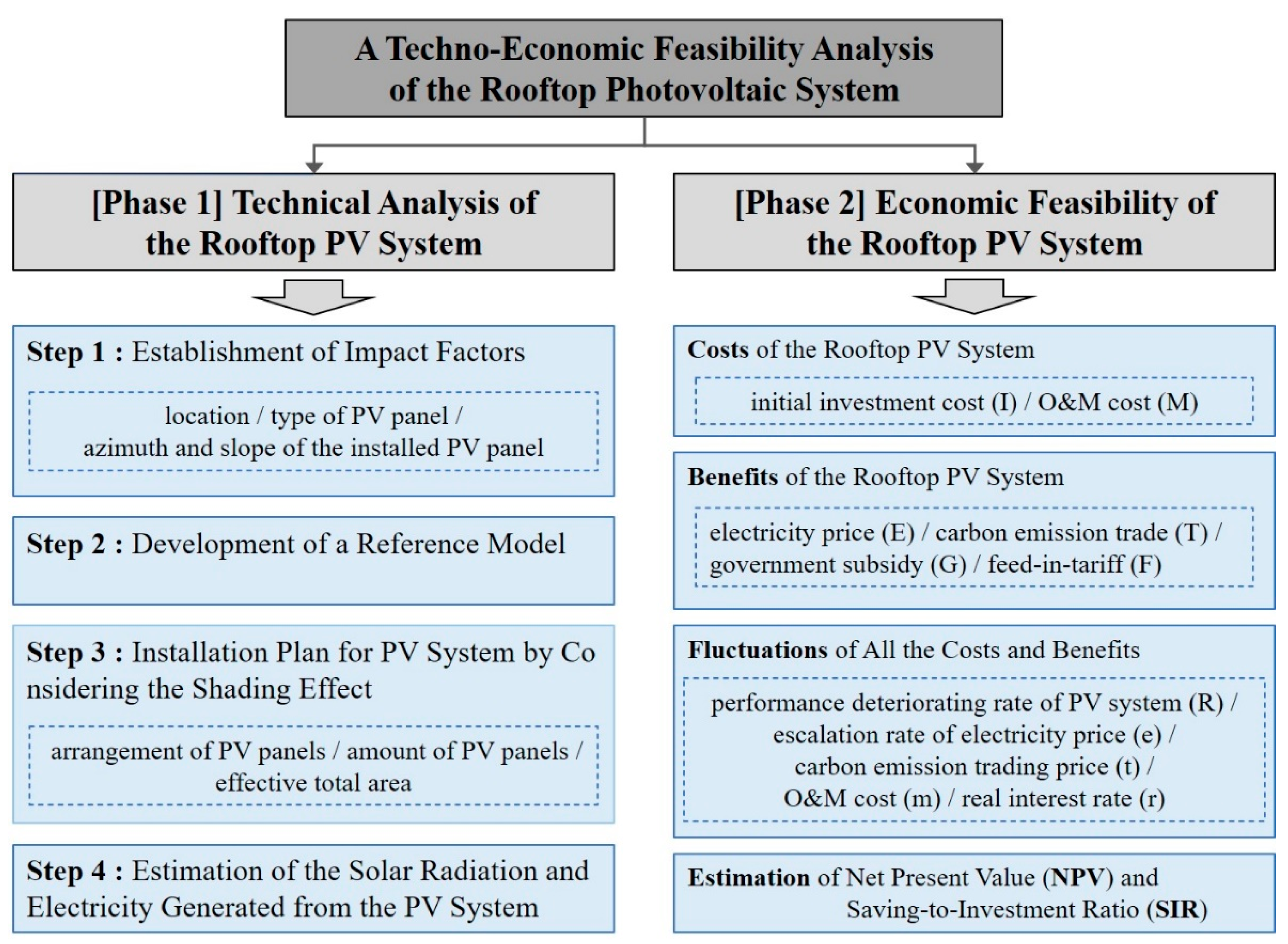
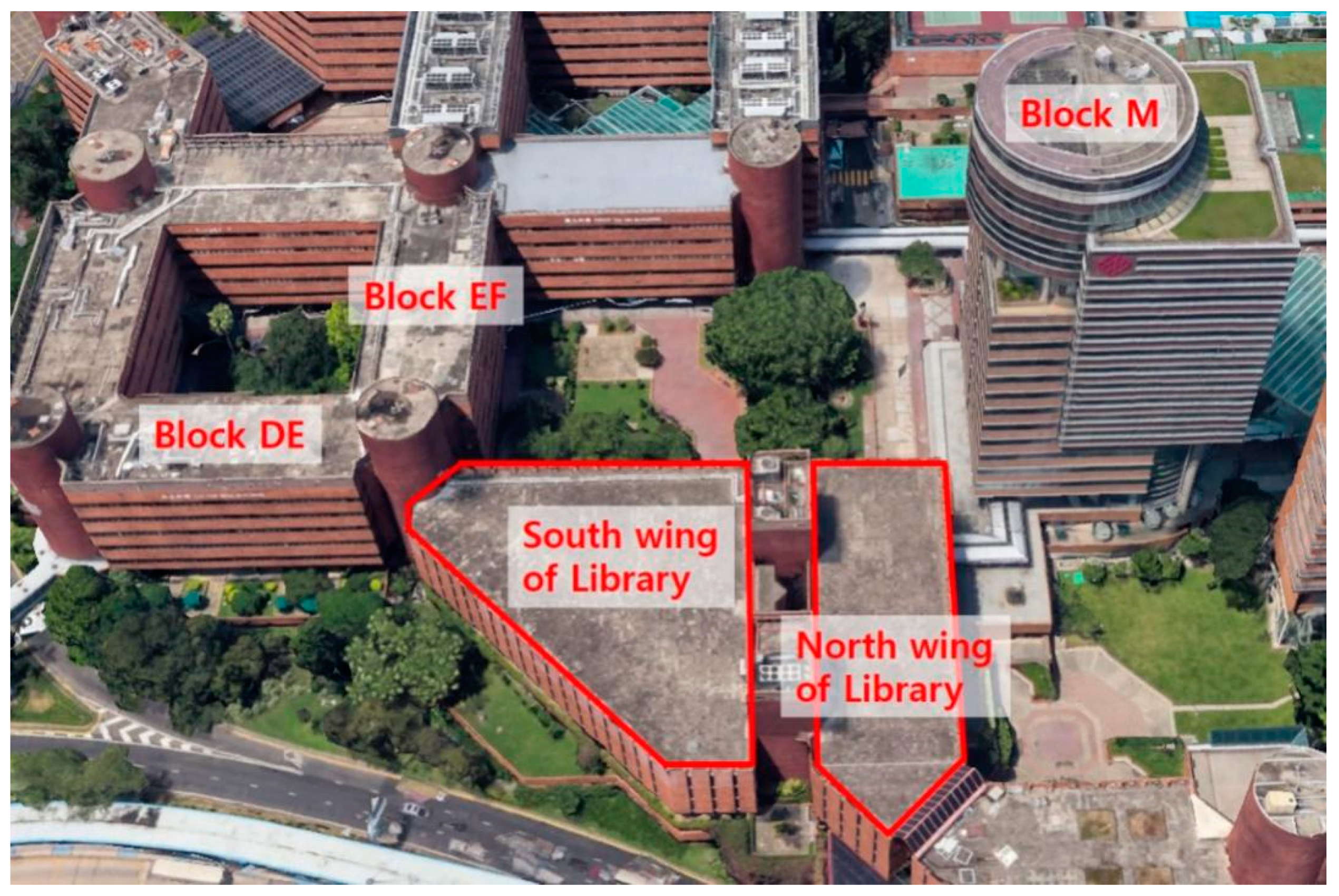
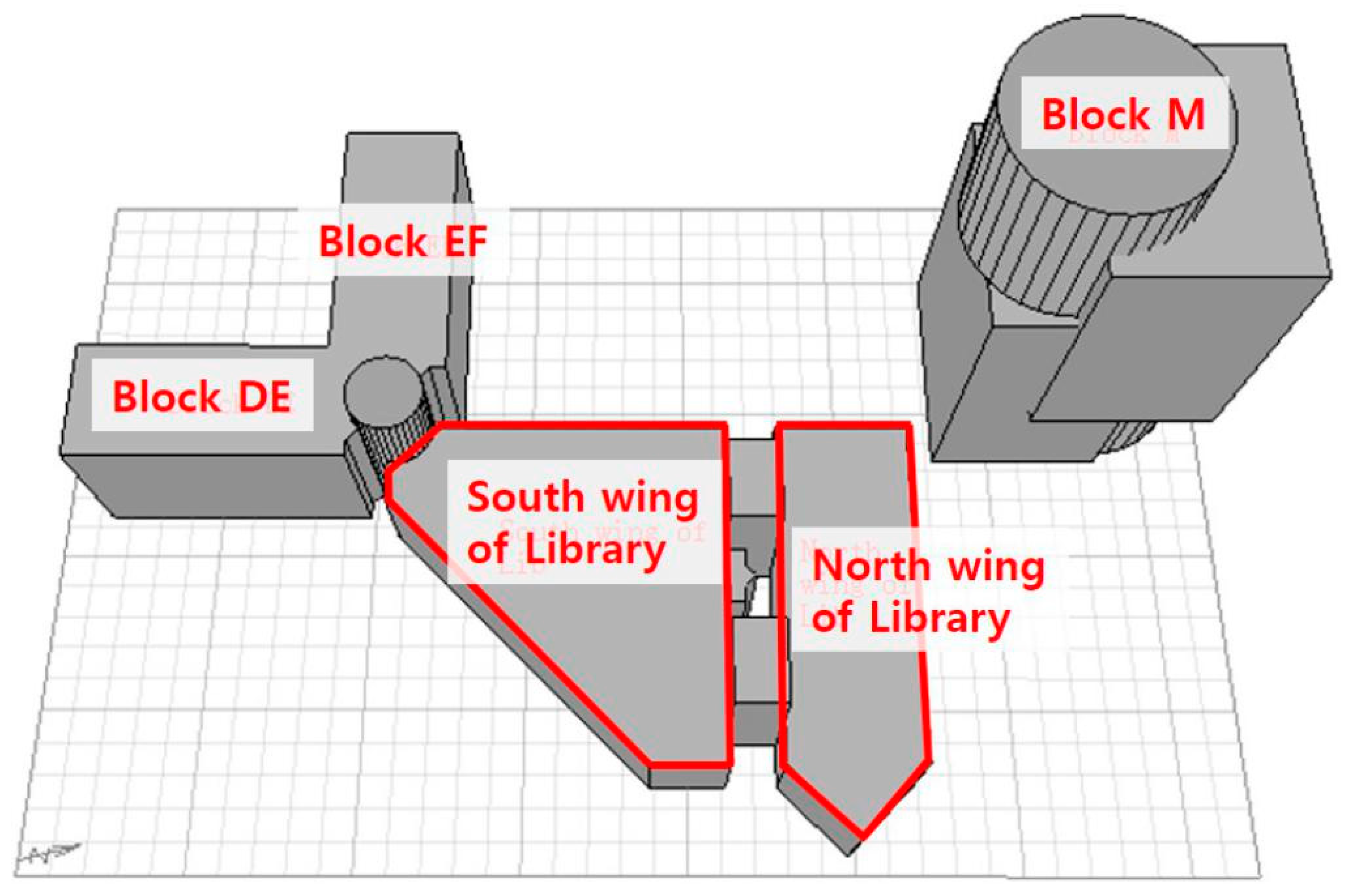
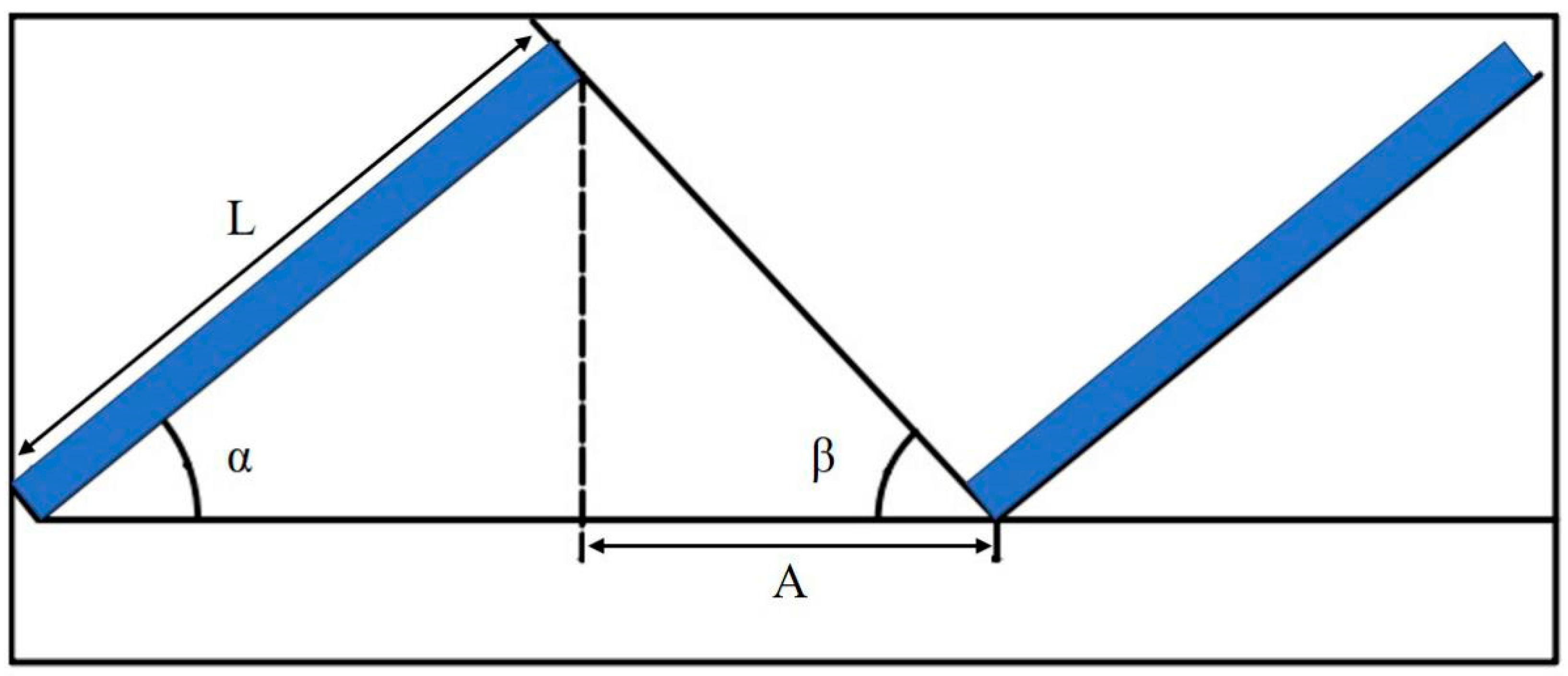
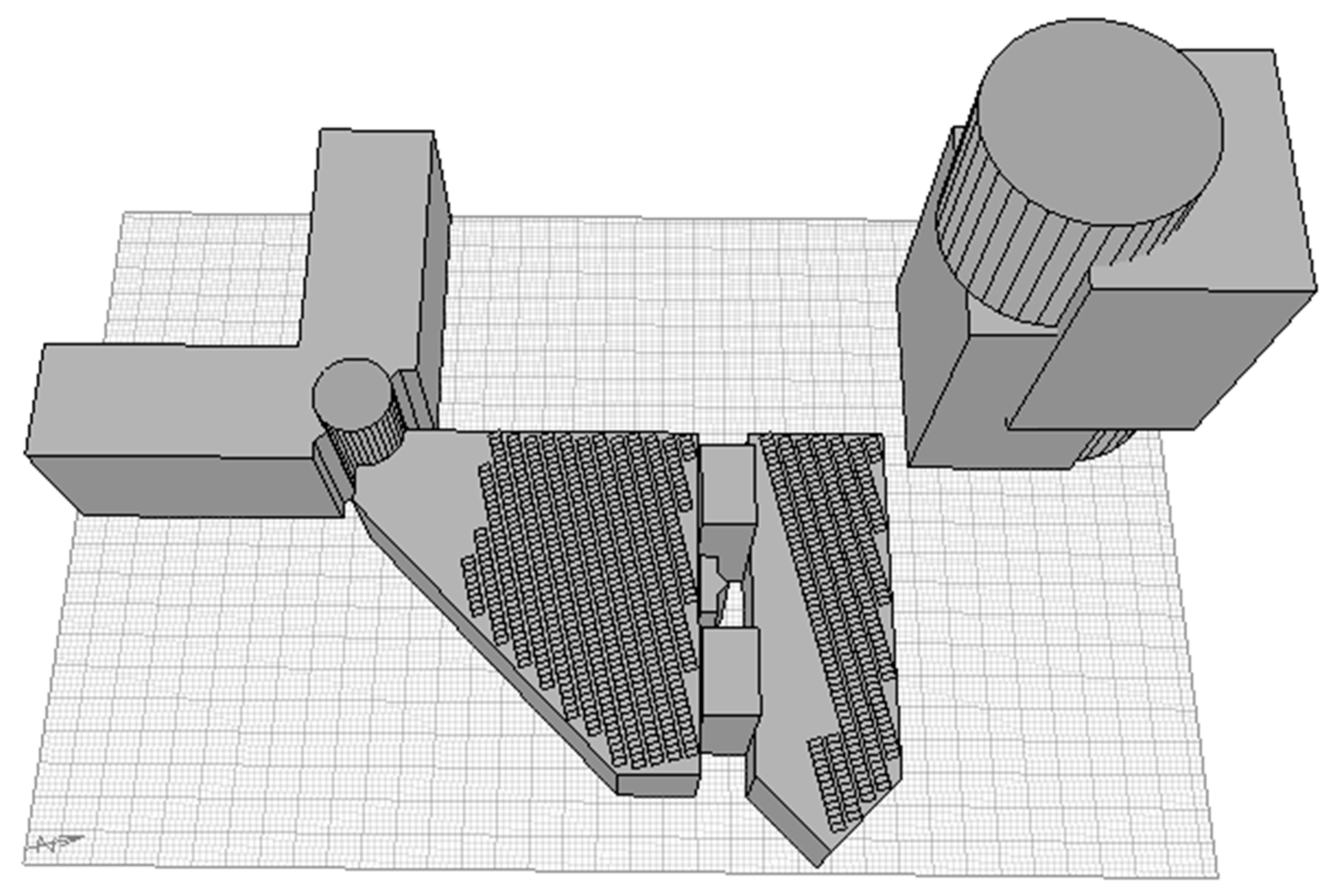
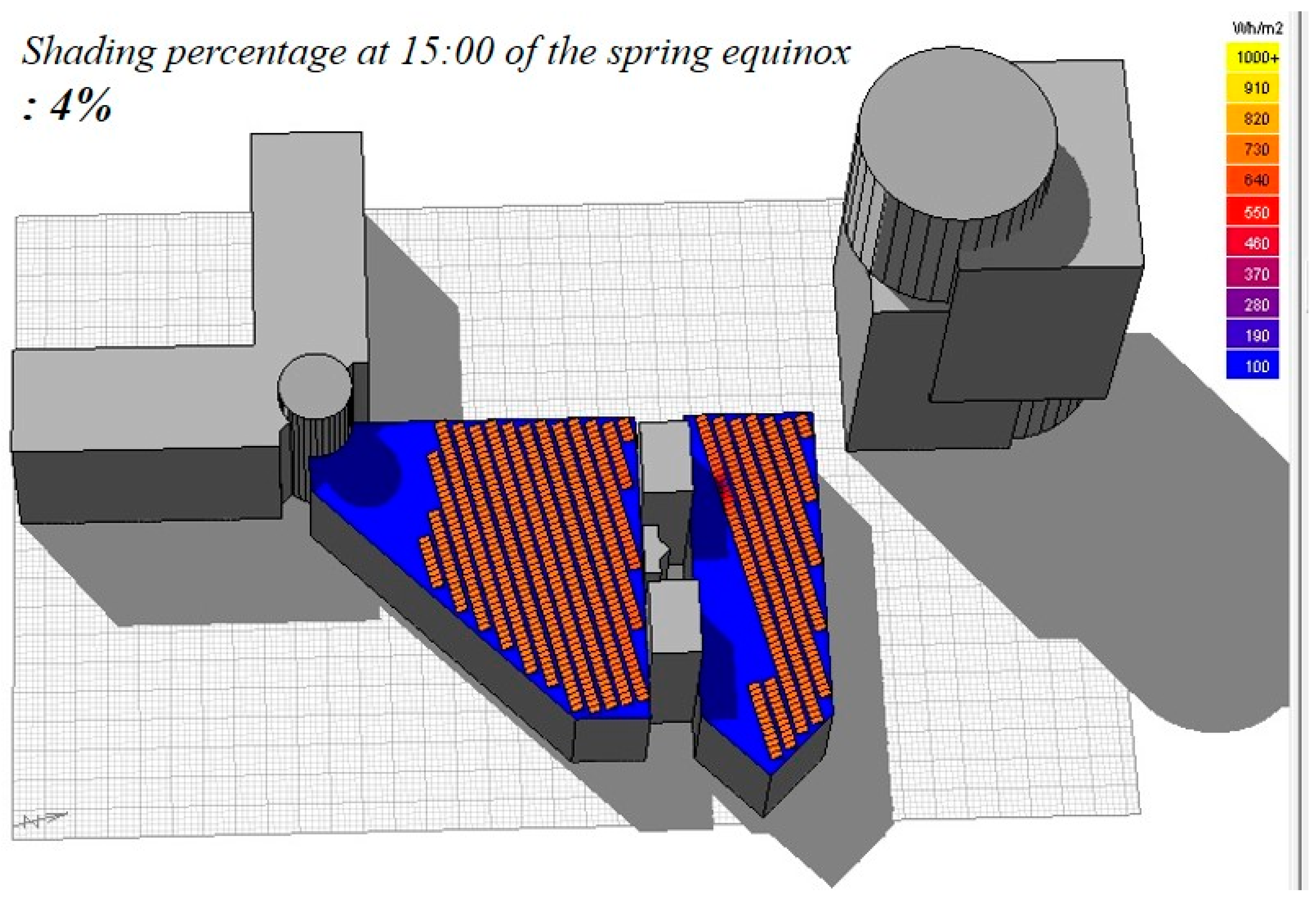

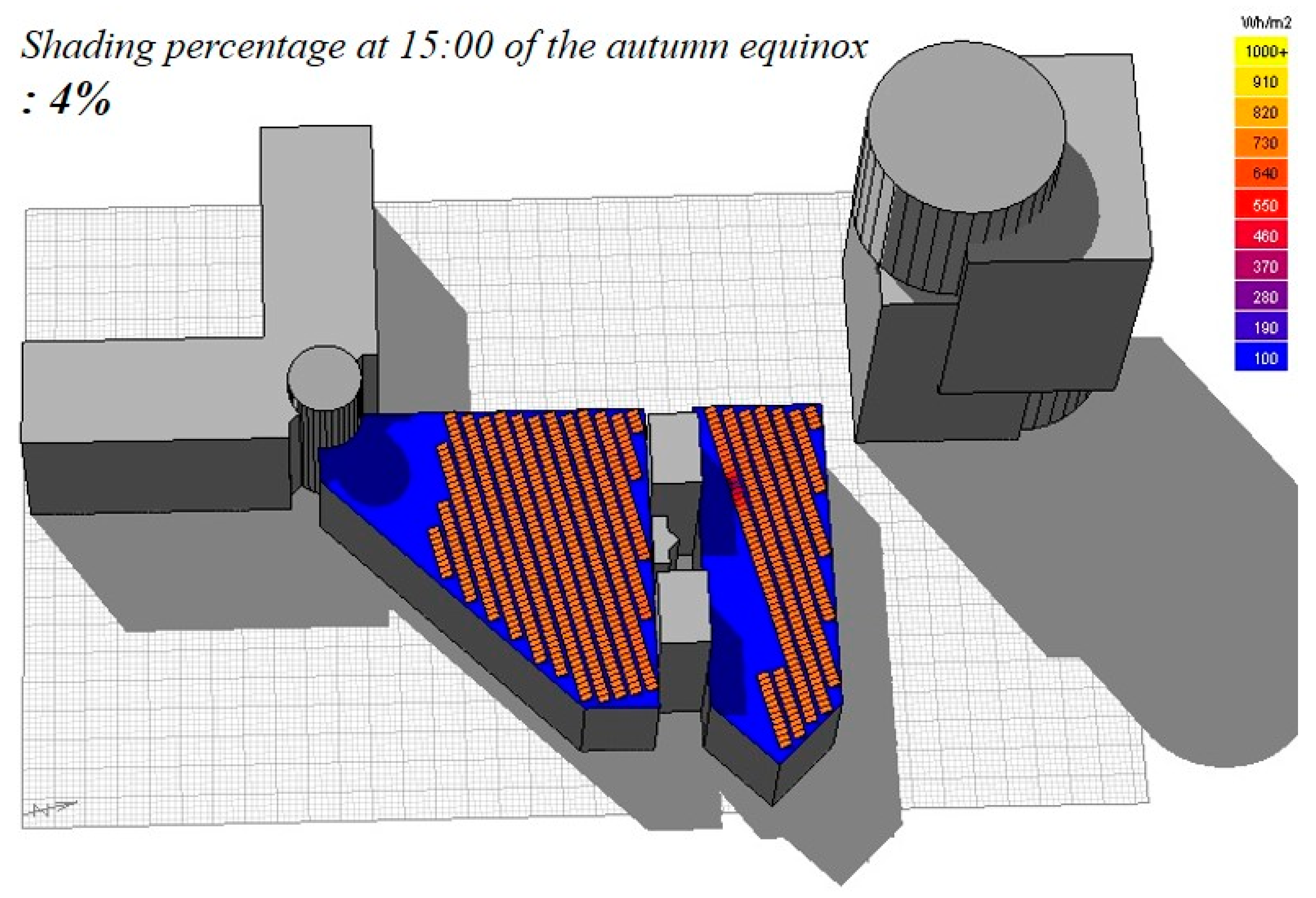
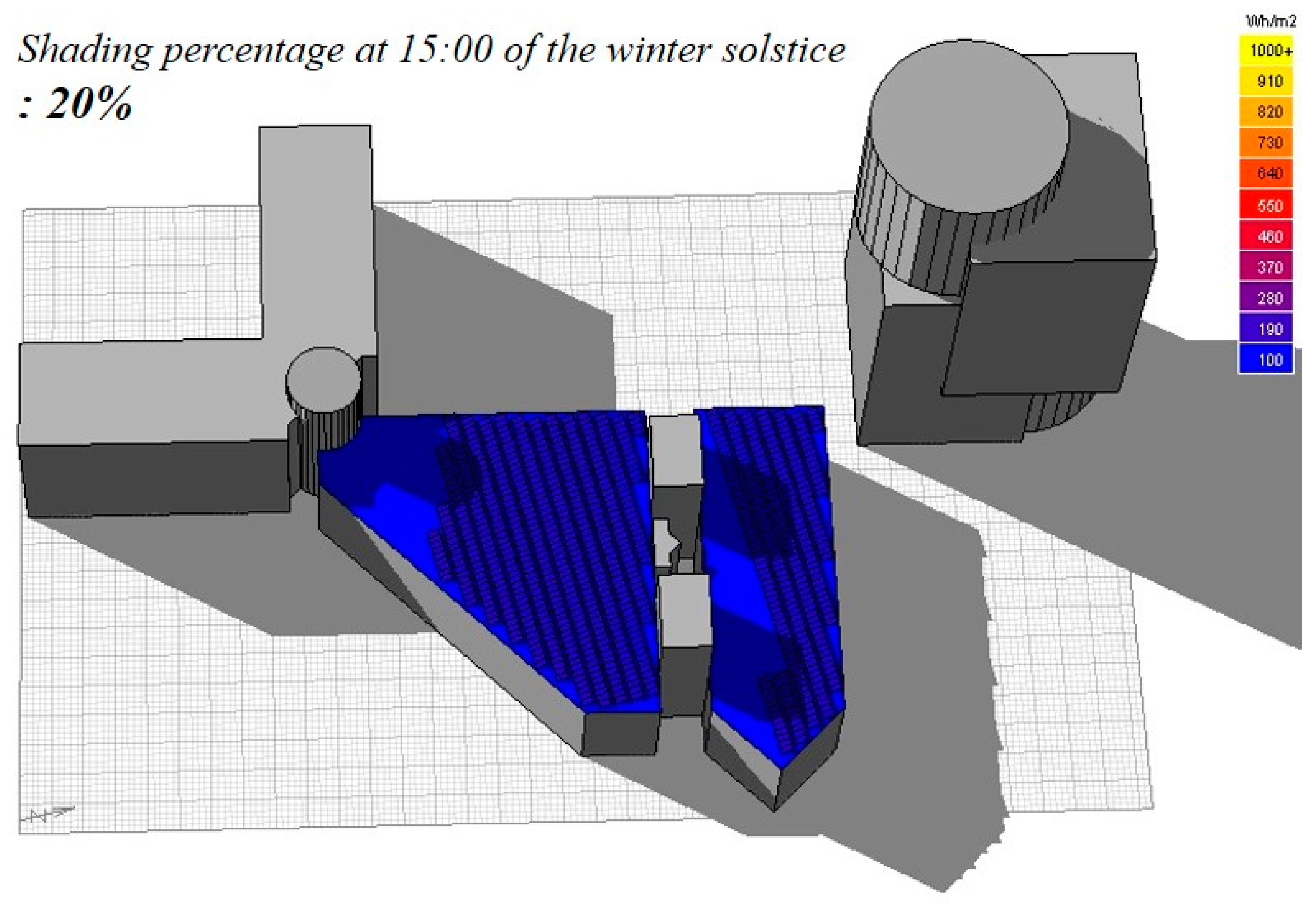

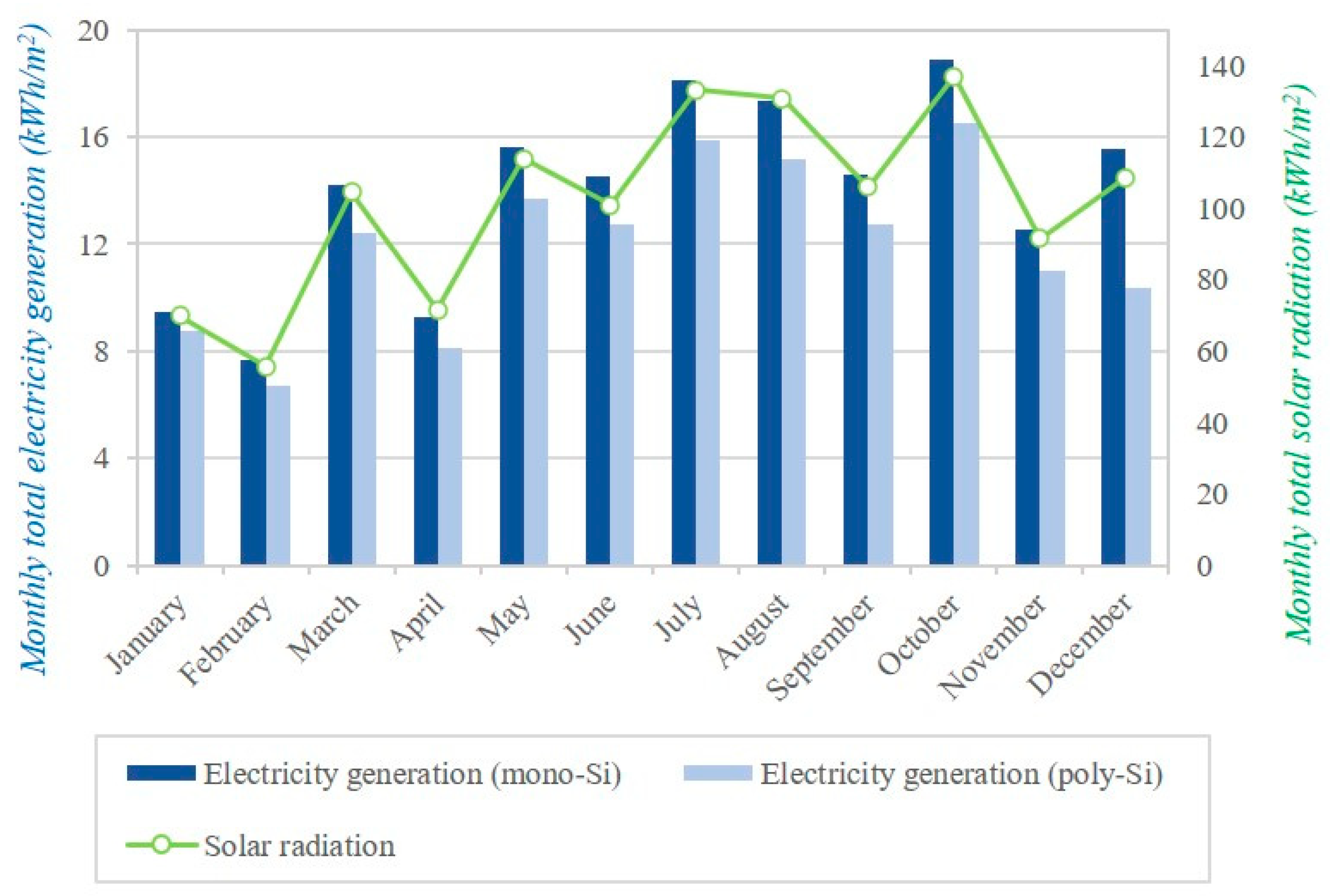
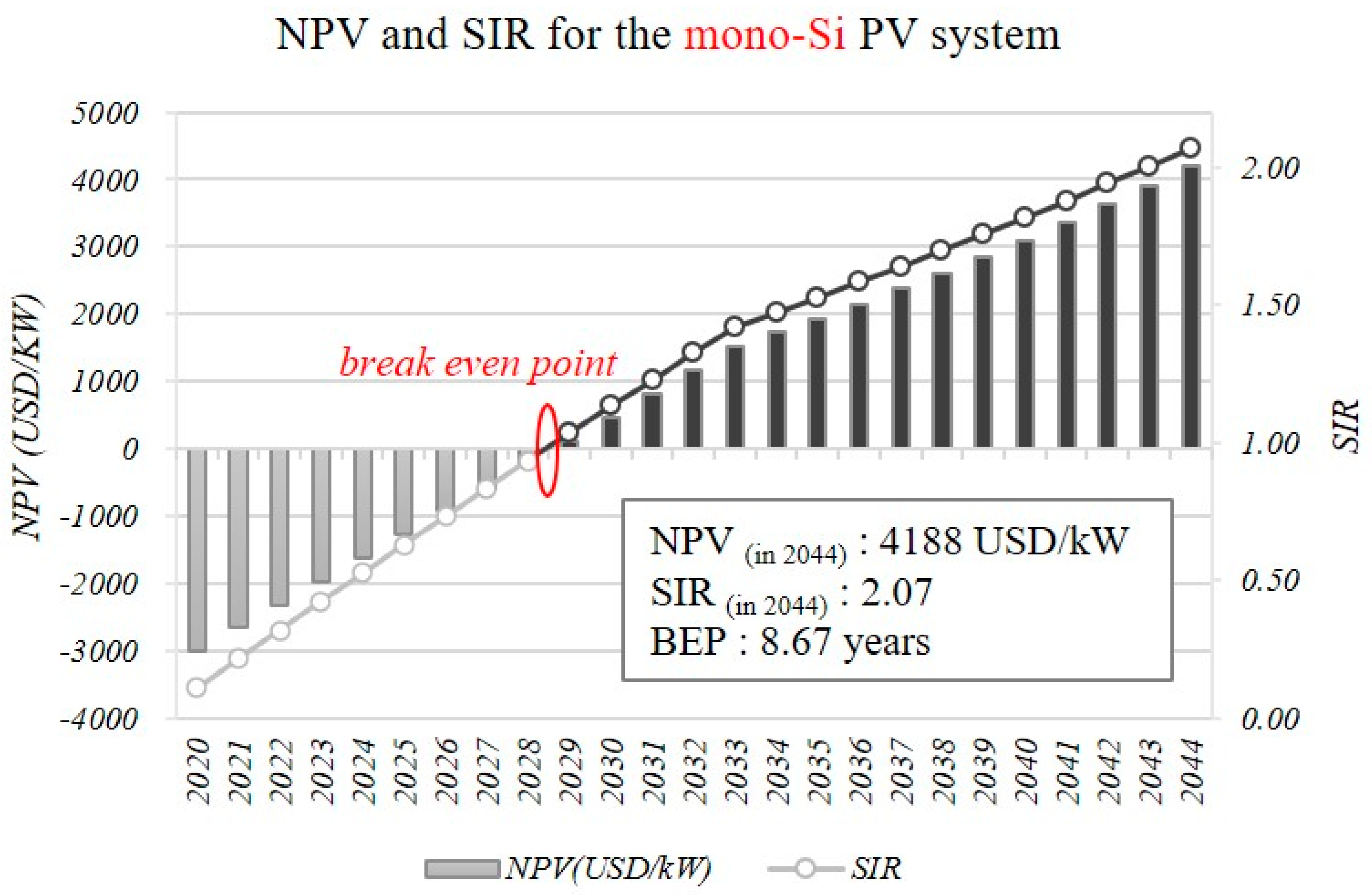
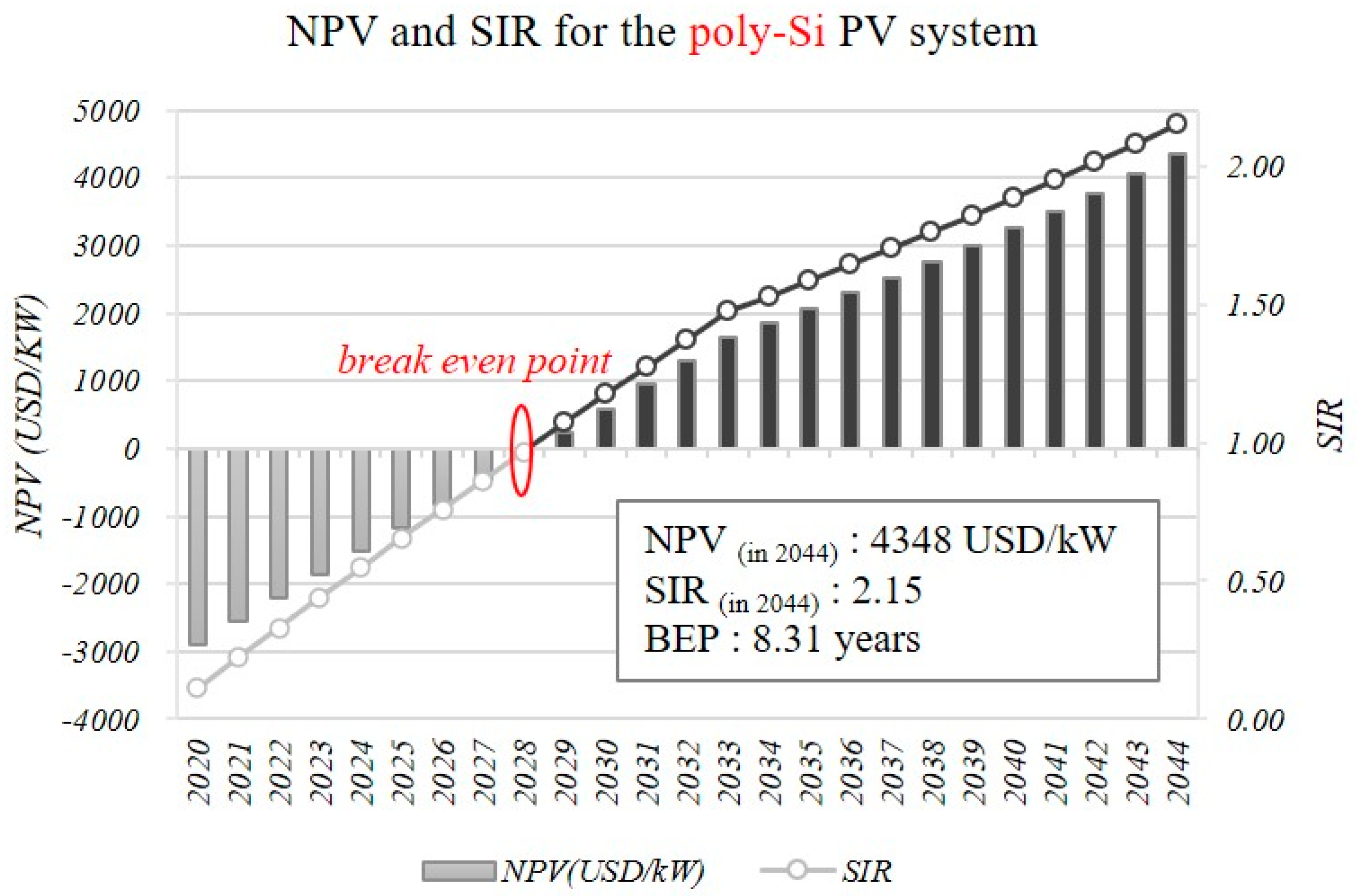
| Generation of PV System and Its Materials | Efficiency (%) | |
|---|---|---|
| First generation (crystalline silicon) | Monocrystalline (mono-Si) | 15–21% |
| Polycrystalline (poly-Si) | 14–18% | |
| Second generation (thin film) | Amorphous silicon (a-Si) | 6–9% |
| Cadmium telluride (CdTe) | 14–17% | |
| Copper indium gallium selenide (CIGS) | 10–15% | |
| Classification | Mono-Si PV System | Poly-Si PV System |
|---|---|---|
| Manufacturer | Csun Solar Tech | Csun Solar Tech |
| Specification | CSUN355-72M | CSUN310-72P |
| Capacity per unit (kW) | 0.355 | 0.310 |
| Efficiency | 18.30% | 16.00% |
| Length (m) | 1.96 | 1.96 |
| Width (m) | 0.99 | 0.99 |
| Classification | Mono-Si PV System | Poly-Si PV System |
|---|---|---|
| Tilt angle | 22.3° | 22.3° |
| Orientation | South | South |
| Shading space | 0.76 m | 0.76 m |
| Number of panels | 832 | 832 |
| Installed capacity | 295.36 kW | 257.92 kW |
| Classification | Mono-Si PV System | Poly-Si PV System |
|---|---|---|
| Unit cost per capacity | USD 3354/kW | USD 3250/kW |
| Initial investment cost for PV system (I0) | USD 990,637 | USD 838,240 |
| O&M cost (M0) | 0.5% of the initial investment cost for each year | 0.5% of the initial investment cost for each year |
| Capacity of the Installed PV Systems | Feed-in Tariff (PF) |
|---|---|
| ≤10 kW | USD 0.65/kWh |
| 10 kW–200 kW | USD 0.52/kWh |
| 200 kW–1 MW | USD 0.39/kWh |
| Variable | Description | Value |
|---|---|---|
| Electricity price | USD 0.1541/kWh | |
| Carbon emission trading price | USD 0.0041/kg | |
| f | Carbon emission factor | 0.62 kg/kWh |
| Feed-in tariff | USD 0.39/kWh |
| Variables | Description | Value |
|---|---|---|
| R | Performance degradation rate of the PV systems | 0.8%/year |
| e | Escalation rate of electricity price | 3.0% |
| t | Escalation rate of carbon emission trading price | 3.0% |
| m | Escalation rate of O&M cost | 1%/year |
| r | Real interest rate | −1.3% |
| Year | 2010 | 2011 | 2012 | 2013 | 2014 | 2015 | 2016 | 2017 | 2018 | 2019 |
|---|---|---|---|---|---|---|---|---|---|---|
| Electricity price (PE) | 91.6 | 94.2 | 98.7 | 104.7 | 111.0 | 110.3 | 113.2 | 110.5 | 115.4 | 118.5 |
| Escalation rate (e) | 2.8 | 2.8 | 4.8 | 6.1 | 6.0 | 0.3 | 2.6 | −2.4 | 4.2 | 2.6 |
| Average escalation rate (e) | 3.0 | |||||||||
| Year | 2010 | 2011 | 2012 | 2013 | 2014 | 2015 | 2016 | 2017 | 2018 | 2019 |
|---|---|---|---|---|---|---|---|---|---|---|
| Escalation rate (rinf) | 2.4 | 5.3 | 4.1 | 4.3 | 4.4 | 3.0 | 2.4 | 1.5 | 2.4 | 2.9 |
| Average escalation rate (rinf) | 3.3 | |||||||||
| Month | Monthly Average Solar Radiation per Unit Area (kWh/m2) | Monthly Total Solar Radiation (kWh) |
|---|---|---|
| January | 69.80 | 112,691.46 |
| February | 55.64 | 89,822.74 |
| March | 104.53 | 168,758.28 |
| April | 71.67 | 115,710.32 |
| May | 113.84 | 183,790.64 |
| June | 100.95 | 162,971.74 |
| July | 133.04 | 214,783.25 |
| August | 130.69 | 210,996.51 |
| September | 105.88 | 170,941.07 |
| October | 136.96 | 221,116.64 |
| November | 91.62 | 147,905.86 |
| December | 108.55 | 175,251.66 |
| Total | 1223.18 | 1,974,741.38 |
| Month | The Amount of Electricity Generation | |||||
|---|---|---|---|---|---|---|
| Mono-Si | Poly-Si | |||||
| kWh | kWh/kW | kWh/m2 | kWh | kWh/kW | kWh/m2 | |
| January | 15,270.10 | 51.70 | 9.46 | 14,181.76 | 54.99 | 8.78 |
| February | 12,345.76 | 41.80 | 7.65 | 10,796.60 | 41.86 | 6.69 |
| March | 22,952.67 | 77.71 | 14.22 | 20,069.22 | 77.81 | 12.43 |
| April | 15,000.36 | 50.79 | 9.29 | 13,115.24 | 50.85 | 8.12 |
| May | 25,247.78 | 85.48 | 15.64 | 22,073.88 | 85.58 | 13.67 |
| June | 23,507.53 | 79.59 | 14.56 | 20,553.00 | 79.69 | 12.73 |
| July | 29,300.42 | 99.20 | 18.15 | 25,622.71 | 99.34 | 15.87 |
| August | 27,954.77 | 94.65 | 17.32 | 24,440.72 | 94.76 | 15.14 |
| September | 23,559.02 | 79.76 | 14.59 | 20,600.28 | 79.87 | 12.76 |
| October | 30,457.65 | 103.12 | 18.87 | 26,627.16 | 103.24 | 16.49 |
| November | 20,284.96 | 68.68 | 12.56 | 17,739.18 | 68.78 | 10.99 |
| December | 25,135.55 | 85.10 | 15.57 | 21,976.55 | 65.21 | 10.36 |
| Total | 271,016.54 | 917.58 | 167.87 | 237,796.30 | 921.98 | 147.29 |
Publisher’s Note: MDPI stays neutral with regard to jurisdictional claims in published maps and institutional affiliations. |
© 2021 by the authors. Licensee MDPI, Basel, Switzerland. This article is an open access article distributed under the terms and conditions of the Creative Commons Attribution (CC BY) license (https://creativecommons.org/licenses/by/4.0/).
Share and Cite
Shi, K.; Li, C.; Koo, C. A Techno-Economic Feasibility Analysis of Mono-Si and Poly-Si Photovoltaic Systems in the Rooftop Area of Commercial Building under the Feed-In Tariff Scheme. Sustainability 2021, 13, 4709. https://doi.org/10.3390/su13094709
Shi K, Li C, Koo C. A Techno-Economic Feasibility Analysis of Mono-Si and Poly-Si Photovoltaic Systems in the Rooftop Area of Commercial Building under the Feed-In Tariff Scheme. Sustainability. 2021; 13(9):4709. https://doi.org/10.3390/su13094709
Chicago/Turabian StyleShi, Ke, Chuangyi Li, and Choongwan Koo. 2021. "A Techno-Economic Feasibility Analysis of Mono-Si and Poly-Si Photovoltaic Systems in the Rooftop Area of Commercial Building under the Feed-In Tariff Scheme" Sustainability 13, no. 9: 4709. https://doi.org/10.3390/su13094709
APA StyleShi, K., Li, C., & Koo, C. (2021). A Techno-Economic Feasibility Analysis of Mono-Si and Poly-Si Photovoltaic Systems in the Rooftop Area of Commercial Building under the Feed-In Tariff Scheme. Sustainability, 13(9), 4709. https://doi.org/10.3390/su13094709







